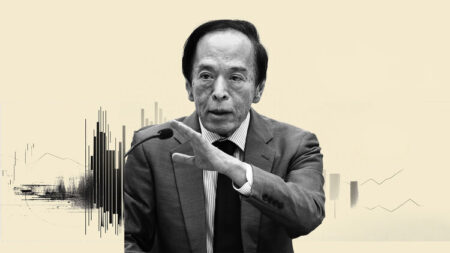- USD/JPY stays under bearish pressure in the American session on Friday.
- The US Dollar (USD) suffers heavy losses following the dismal labor market data.
- Falling US Treasury bond yields further weigh on USD/JPY.
After spending the first half of the day comfortably above 148.00, USD/JPY reversed its direction in the American session and dropped toward 147.00. As of writing, the pair was down 0.75% on the day at 147.30.
US Dollar Price Today
The table below shows the percentage change of US Dollar (USD) against listed major currencies today. US Dollar was the weakest against the New Zealand Dollar.
| USD | EUR | GBP | JPY | CAD | AUD | NZD | CHF | |
|---|---|---|---|---|---|---|---|---|
| USD | -0.62% | -0.68% | -0.74% | -0.08% | -0.99% | -0.99% | -0.77% | |
| EUR | 0.62% | -0.03% | -0.19% | 0.55% | -0.27% | -0.35% | -0.15% | |
| GBP | 0.68% | 0.03% | -0.12% | 0.58% | -0.22% | -0.33% | -0.08% | |
| JPY | 0.74% | 0.19% | 0.12% | 0.72% | -0.18% | -0.22% | 0.13% | |
| CAD | 0.08% | -0.55% | -0.58% | -0.72% | -0.85% | -0.91% | -0.67% | |
| AUD | 0.99% | 0.27% | 0.22% | 0.18% | 0.85% | -0.10% | 0.16% | |
| NZD | 0.99% | 0.35% | 0.33% | 0.22% | 0.91% | 0.10% | 0.25% | |
| CHF | 0.77% | 0.15% | 0.08% | -0.13% | 0.67% | -0.16% | -0.25% |
The heat map shows percentage changes of major currencies against each other. The base currency is picked from the left column, while the quote currency is picked from the top row. For example, if you pick the US Dollar from the left column and move along the horizontal line to the Japanese Yen, the percentage change displayed in the box will represent USD (base)/JPY (quote).
The sharp decline seen in the US Treasury bond yields and the heavy selling pressure surrounding the US Dollar (USD) cause USD/JPY to push lower heading into the weekend.
The monthly data published by the US Bureau of Labor Statistics showed on Friday that Nonfarm Payrolls (NFP) rose by 22,000 in August, missing analysts’ estimate of 75,000 by a wide margin. Additionally, “the change in total Nonfarm Payroll employment for June was revised down by 27,000, from +14,000 to -13,000,” the BLS noted in its press release.
Other details of the publication showed that the Unemployment Rate rose to 4.3% in August from 4.2% in July, while the Labor Force Participation Rate ticked up to 62.3% from 62.2%.
Reflecting the negative impact of the dismal labor market data on the USD, the USD Index, which tracks the USD’s valuation against a basket of six major currencies, was last seen losing 0.65% on the day at 97.62.
Japanese Yen FAQs
The Japanese Yen (JPY) is one of the world’s most traded currencies. Its value is broadly determined by the performance of the Japanese economy, but more specifically by the Bank of Japan’s policy, the differential between Japanese and US bond yields, or risk sentiment among traders, among other factors.
One of the Bank of Japan’s mandates is currency control, so its moves are key for the Yen. The BoJ has directly intervened in currency markets sometimes, generally to lower the value of the Yen, although it refrains from doing it often due to political concerns of its main trading partners. The BoJ ultra-loose monetary policy between 2013 and 2024 caused the Yen to depreciate against its main currency peers due to an increasing policy divergence between the Bank of Japan and other main central banks. More recently, the gradually unwinding of this ultra-loose policy has given some support to the Yen.
Over the last decade, the BoJ’s stance of sticking to ultra-loose monetary policy has led to a widening policy divergence with other central banks, particularly with the US Federal Reserve. This supported a widening of the differential between the 10-year US and Japanese bonds, which favored the US Dollar against the Japanese Yen. The BoJ decision in 2024 to gradually abandon the ultra-loose policy, coupled with interest-rate cuts in other major central banks, is narrowing this differential.
The Japanese Yen is often seen as a safe-haven investment. This means that in times of market stress, investors are more likely to put their money in the Japanese currency due to its supposed reliability and stability. Turbulent times are likely to strengthen the Yen’s value against other currencies seen as more risky to invest in.
Read the full article here
















